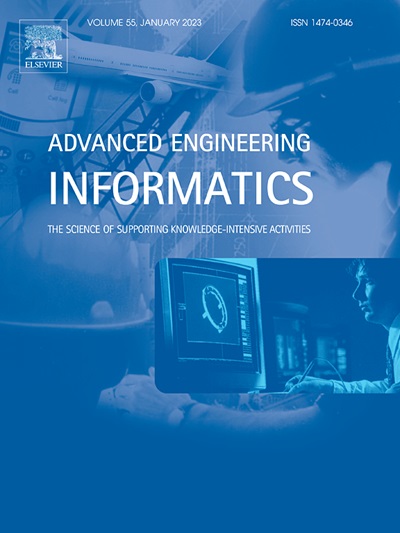Loading optimization of mixed-type containers for double-stack trains in multi-hub logistics
IF 8
1区 工程技术
Q1 COMPUTER SCIENCE, ARTIFICIAL INTELLIGENCE
引用次数: 0
Abstract
Electrified double-stack container trains (DSTs) play a crucial role in modern logistics by offering increased capacity per trip, reduced rail car usage, lower transportation costs, and fewer emissions. However, optimizing container loading for DSTs is challenging due to constraints such as height limits, center of gravity balance, and other operational requirements. This paper introduces a mixed-integer programming (MIP) model aimed at maximizing transportation efficiency in multi-hub logistics networks, which include intermodal terminals and freight stations. The model supports mixed loading of containers of varying lengths (20/40/48 feet), heights (standard/high cube), load statuses (empty/loaded), and types (regular/foldable), originating from and destined for different locations. Additionally, it incorporates the combination of double-stack container well cars with other rail car types, increasing flexibility in rail car organization and accelerating DST departure times. To solve the complex loading problem, a hybrid genetic algorithm combined with simulated annealing (hybrid GA-SA) is developed. The hybrid GA-SA demonstrates strong performance in numerical case studies across different scales, significantly reducing the number of rail cars needed for large-scale logistics operations while achieving optimal loading configurations. Sensitivity analysis highlights key factors influencing overall transportation benefits. This study offers practical insights for enhancing the operational efficiency and profitability of DSTs and improving container hub throughput within modern logistics networks.
求助全文
约1分钟内获得全文
求助全文
来源期刊

Advanced Engineering Informatics
工程技术-工程:综合
CiteScore
12.40
自引率
18.20%
发文量
292
审稿时长
45 days
期刊介绍:
Advanced Engineering Informatics is an international Journal that solicits research papers with an emphasis on 'knowledge' and 'engineering applications'. The Journal seeks original papers that report progress in applying methods of engineering informatics. These papers should have engineering relevance and help provide a scientific base for more reliable, spontaneous, and creative engineering decision-making. Additionally, papers should demonstrate the science of supporting knowledge-intensive engineering tasks and validate the generality, power, and scalability of new methods through rigorous evaluation, preferably both qualitatively and quantitatively. Abstracting and indexing for Advanced Engineering Informatics include Science Citation Index Expanded, Scopus and INSPEC.
 求助内容:
求助内容: 应助结果提醒方式:
应助结果提醒方式:


